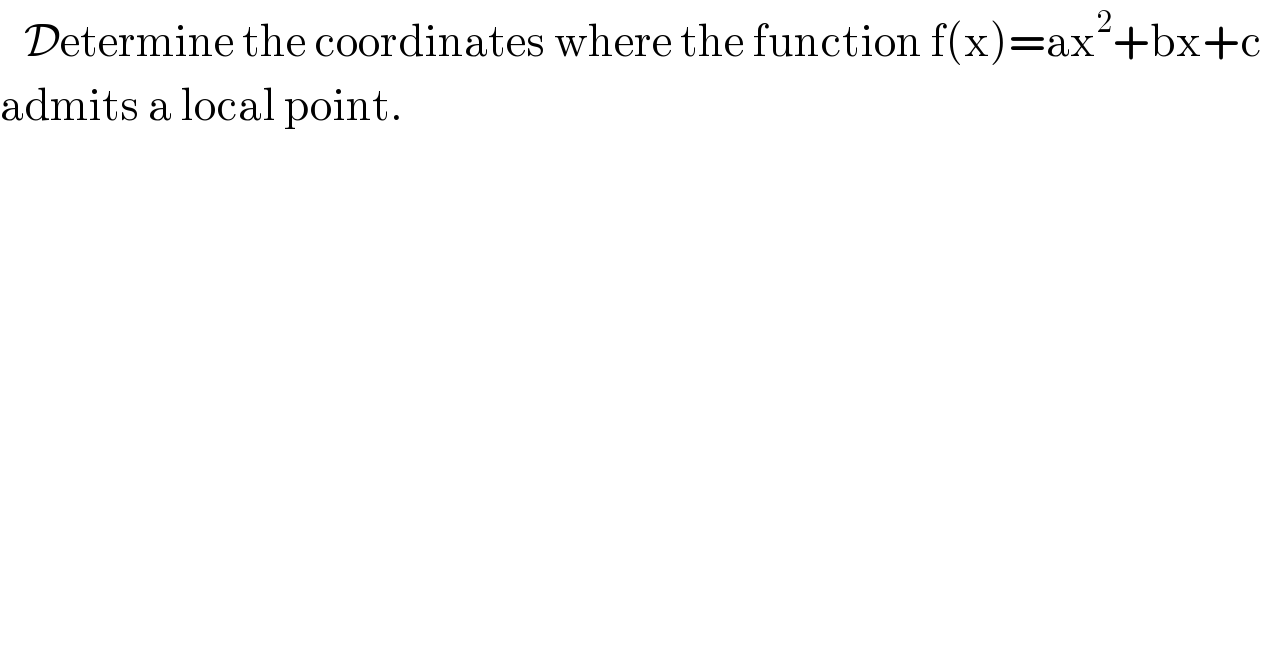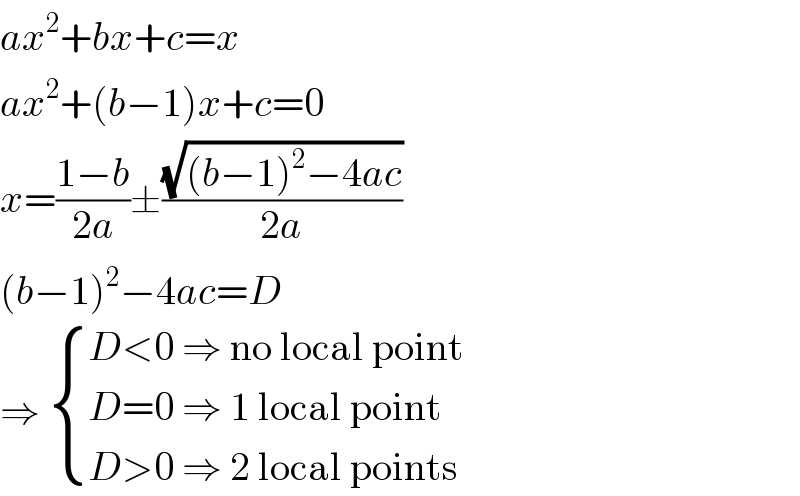
Question Number 100391 by Ar Brandon last updated on 26/Jun/20

$$\:\:\:\mathcal{D}\mathrm{etermine}\:\mathrm{the}\:\mathrm{coordinates}\:\mathrm{where}\:\mathrm{the}\:\mathrm{function}\:\mathrm{f}\left(\mathrm{x}\right)=\mathrm{ax}^{\mathrm{2}} +\mathrm{bx}+\mathrm{c} \\ $$$$\mathrm{admits}\:\mathrm{a}\:\mathrm{local}\:\mathrm{point}. \\ $$
Answered by MJS last updated on 26/Jun/20

$${ax}^{\mathrm{2}} +{bx}+{c}={x} \\ $$$${ax}^{\mathrm{2}} +\left({b}−\mathrm{1}\right){x}+{c}=\mathrm{0} \\ $$$${x}=\frac{\mathrm{1}−{b}}{\mathrm{2}{a}}\pm\frac{\sqrt{\left({b}−\mathrm{1}\right)^{\mathrm{2}} −\mathrm{4}{ac}}}{\mathrm{2}{a}} \\ $$$$\left({b}−\mathrm{1}\right)^{\mathrm{2}} −\mathrm{4}{ac}={D} \\ $$$$\Rightarrow\:\begin{cases}{{D}<\mathrm{0}\:\Rightarrow\:\mathrm{no}\:\mathrm{local}\:\mathrm{point}}\\{{D}=\mathrm{0}\:\Rightarrow\:\mathrm{1}\:\mathrm{local}\:\mathrm{point}}\\{{D}>\mathrm{0}\:\Rightarrow\:\mathrm{2}\:\mathrm{local}\:\mathrm{points}\:}\end{cases} \\ $$
Commented by Ar Brandon last updated on 26/Jun/20
Thanks Sir��
